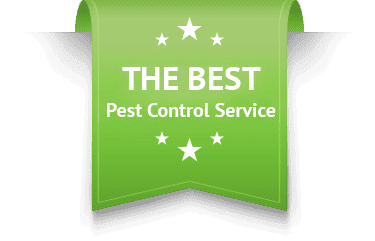Ants may be tiny, but they can be a big problem when they invade your home. They come in various shapes, sizes, and habits, and it’s important to understand what you’re dealing with to effectively manage an infestation. For homeowners in Maryland and Pennsylvania, the array of ant species that can cause issues is noteworthy. Recognizing the types of ants that could invade your space is the first step to safeguarding your home. In this comprehensive guide, we’ll take a closer look at some of the most common ant species in the region and discuss how you can deal with them effectively.
Knowing Your Ants: Species Spotlights
Odorous House Ants
Native to the United States, odorous house ants are one of the most common ants to invade homes. They get their name from the foul odor they release when crushed that is often described as “rotten coconut.” These ants are attracted to sweet substances and will leave a scent trail that other ants will follow, leading to a trail of potential invaders.
Behavior and Characteristics: Odorous house ants typically build their nests near a water source. They are active throughout the year, but often seek shelter indoors during rainy or very dry weather. They are usually brown or black and measure about 2.4 to 3.25 millimeters long.
Control and Prevention Strategies: To prevent odorous house ant infestations, keep food in tightly sealed containers, clean up spills promptly, and eliminate standing water. Sealing entry points is also crucial. Professional pest control services can assist in managing infestations.
Carpenter Ants
Carpenter ants are a destructive force to reckon with. They don’t eat wood, but they excavate it to build their nests, which can lead to serious structural damage over time.
Behavior and Characteristics: These ants are quite large, black, or red, and can measure from 6 to 13 millimeters. They do not carry diseases known to affect humans, unlike other pests, but their nesting habits are a major concern.
Control and Prevention Strategies: To prevent carpenter ant issues, it’s vital to control excess moisture around the home and remove potential nesting sites. Regularly inspecting the perimeter of your home, especially wooden areas, can help identify early signs of an infestation.
Pavement Ants
These small, dark ants are often found nesting under slabs, roads, and sidewalks. In homes, they’ll make a home in walls, under floorboards, and other undisturbed areas.
Behavior and Characteristics: Measuring about 2.5 to 3 millimeters, pavement ants are known for their tendency to create visible mounds of earth between paving stones, hence the name.
Control and Prevention Strategies: Pesticides are sometimes necessary to control heavy infestations, but for prevention, seal cracks and crevices inside and outside your home, keep clutter to a minimum, and maintain clean conditions.
Integrated Pest Management: A Holistic Approach
Integrated Pest Management (IPM) is an effective approach for managing ant infestations. It focuses on preventing the ants’ entry, using non-chemical and chemical treatments, and monitoring to ensure the problem has been resolved.
Prevention
Keeping a clean home isn’t always enough to deter ants. They can find the smallest of openings to enter. Regularly inspecting and sealing cracks in windows, doors, and walls is key. Properly store food, do not leave pet food out, and keep basements and crawl spaces well-ventilated and dry.
Non-Chemical Treatments
Non-chemical treatments can be effective in deterring ants. These include baits that can be deployed to specific areas, such as near ant trails or entry points, and gels that can be applied to surfaces. Consistency is crucial, as these baits can take weeks to eliminate an entire colony.
Chemical Treatments
When non-chemical treatments are not effective, it may be necessary to use pesticides. It’s important to follow all label instructions carefully, and consider hiring a professional, as they have the knowledge and access to the necessary tools to apply pesticides safely.
How On the Fly Pest Solutions Can Help
On The Fly Pest Solutions is your ally in the war against ants. With our comprehensive pest control packages, you can protect your home from various ant species. Our professional team is dedicated to understanding your pest problems and providing tailored solutions to keep them at bay.
Inspection
Our first step is a thorough inspection to identify the type of ant species and the extent of the infestation.
Tailored Solutions
We then create a plan that could include a combination of exclusion, behavioral changes, and treatment options to best suit your unique situation.
Continuous Protection
We don’t just fix the problem; we also offer ongoing protection to keep ants and other pests from returning.
Eco-Friendly Approach
We use eco-friendly products and techniques whenever possible to minimize the impact on the environment and on your family’s health.
Educating for Long-Term Preparedness
One of the most effective ways to combat ant issues is through education. Knowing what to look for and how to address problems before they escalate is critical.
Workshops and Resources
We provide workshops and resources to educate homeowners about local ant species and the best practices for prevention and control.
Community Involvement
At On The Fly Pest Solutions, we’re committed to our community. We collaborate with local organizations to spread awareness and share resources for effective pest management.
Ants are persistent pests that require an active defense. By understanding the various ant species that can invade your home and taking proactive measures to prevent and control infestations, you can maintain a pest-free environment for your family. Remember, when facing pest problems, professional pest control services can offer expertise and resources that you may not have access to. Don’t wait until ants have overrun your space – take action now to protect your home.

